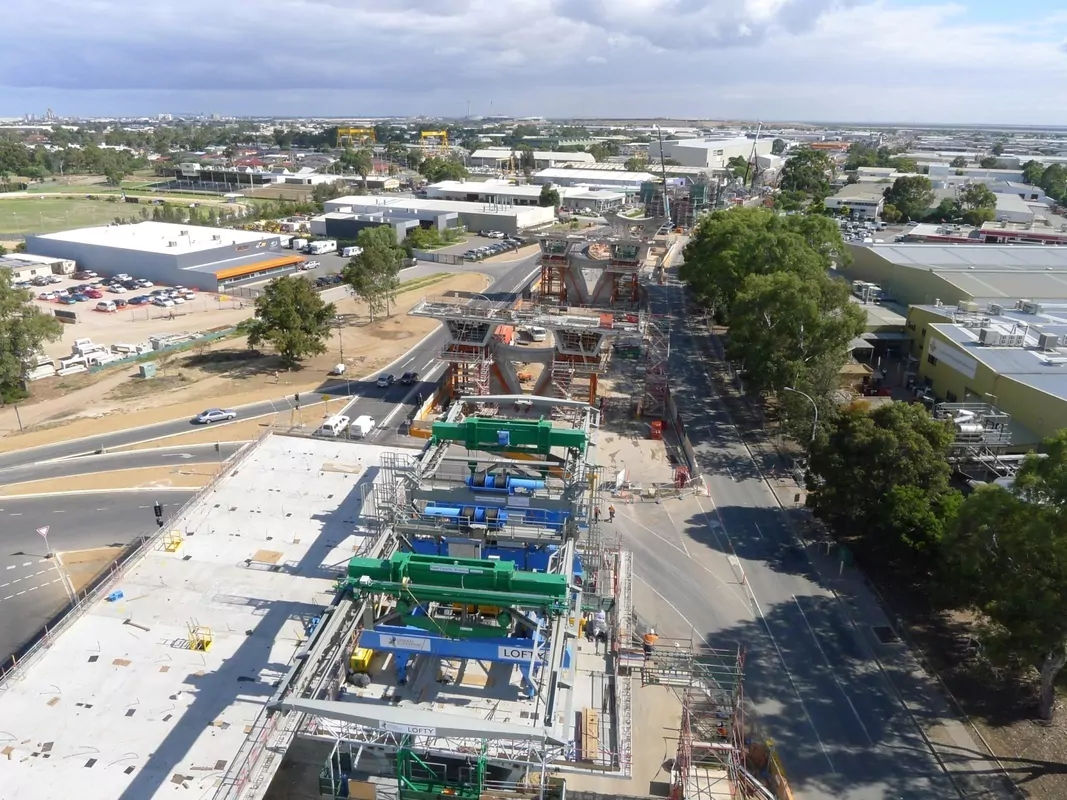
A landmark gateway to metropolitan Adelaïde
The South Road Superway is a 4.8-kilometre non-stop north-south corridor, which needed to be upgraded to improve traffic efficiency, enhance road safety, remove bottlenecks, and reduce congestion in the metropolitan area.
The innovative corridor solution involved the construction of a complex 2.8-kilometre, elevated road bridge providing multiple lanes in each direction above the existing South Road alignment -one of the busiest roads in the region- and crossing major intersections, railway tracks and swales.
The elevated roadway was selected as the most suitable design given the local circumstances.





